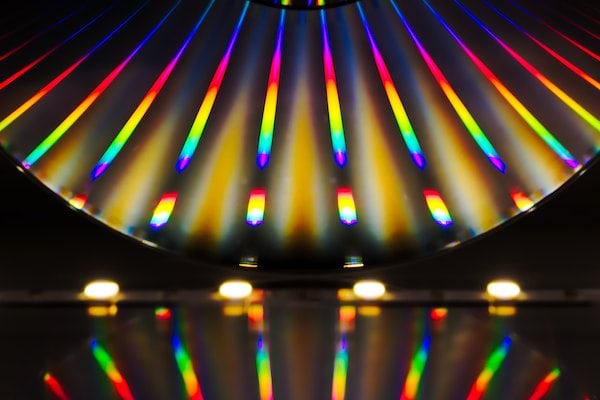
[Image above] Credit: B. K.; Flickr CC BY-NC 2.0
About a decade ago, I lived in a cozy duplex with a lovely next-door neighbor. The neighborhood was quiet and friendly, the apartment was nice, and it felt like home. There was just one problem—that lovely next-door neighbor had installed LED lights in all his lighting fixtures.
Okay, that might not sound like a problem. But I assure you, when I would return at night and my neighbor was home, his side of the duplex looked incredibly eerie. Those LED lights cast such an unnatural blue glow that creeped out of the windows and into the dark night that it looked like there had to be some strange portal to another dimension opening up inside.
My neighbor, like many other conscientious individuals, had installed LED lights because they are much more energy efficient than traditional incandescent light bulbs.
In 2018, about 6 percent of total United States electricity consumption was spent keeping the lights on, according to the U.S. Energy Information Association. This consumption could be reduced noticeably by switching from traditional light sources, such as incandescent bulbs, to solid state lighting, which consists of LED technologies—it offers potential energy savings of up to 75 percent by 2035, based on U.S. Office of Energy Efficiency and Renewable Energy estimates.
But one thing LED manufacturers have struggled with is getting their color right, especially in contrast to the warmth of incandescent bulbs many of us are accustomed to.
As my tale above indicates, early iterations of LED lighting were far from warm. Today, however, advances in materials have led to much better color control of LEDs, with bulbs now sold across a range of color temperatures from warm to cool.
To emit white light, LED bulbs generally rely on a mixed balance of several different individually colored LEDs to achieve a white color, or using blue LEDs along with phosphors to achieve emission at a desired wavelength of light. But that means current LED bulbs are relatively fixed—you could not switch from a cool color during the day to a warmer color at night, for instance, at least not with a single LED.
Future LEDs may not be so limited. A team of scientists from Lehigh University, West Chester University, Osaka University, and University of Amsterdam recently developed a new technique to generate color-tunable LEDs.
“This work could make it possible to tune between bright white and more comfortable warmer colors in commercial LEDs,” senior author Volkmar Dierolf says in a Lehigh University press release. “It could pave the way for monolithic integration for simple color tuning of a light bulb. It would also be beneficial for micro-LED displays, since it allows for higher density of pixels.”
The team developed the novel LED out of gallium nitride (GaN), a material that seems to be having its moment right now.
It was almost four years ago that I wrote about developments pushing GaN into the center ring to battle with silicon for reign over the electronics world. Since that time, a lot of research has been poking and prodding the abilities of GaN as a material for a wide range of electronics applications—we even reported on CTT just a few of months ago that the wonder material GaN was enabling more efficient and compact wall chargers for our most beloved electronics devices!
GaN is already present in some modern LEDs, so this new development could further extend the material’s reach into the lighting world by affording GaN LEDs even greater flexibility.
The scientists’ secret to making color-tunable LEDs wasn’t GaN, however, but another element that they used to dope GaN—rare-earth element europium (Eu).
Their research shows that by controlling different excited states of Eu3+ ions in doped GaN, a single LED can emit varying colors of light without significantly impacting the device’s efficiency.

(Top) A GaN:Eu LED, which can be tuned from red to yellow due to red and green light mixing from different Eu states. (Middle and bottom) A GaN:Eu LED with added Si/Mg, which causes blue emission. Each picture is under a different current injection/filtering condition. Image courtesy of West Chester University
“Using intentional co-doping and energy-transfer engineering, we show that all three primary colors can emit due to emission originating from two different excited states of the same Eu3+ ion (~620 nm and ~545 nm) mixed with near band edge emission from GaN centered at ~430 nm,” Dierolf explains in the release. “The intensity ratios of these transitions can be controlled by choosing the current injection conditions such as injection current density and duty cycle under pulsed current injection.”
Although the scientists acknowledge their work is preliminary, they note that the results pave the way for development of monolithic LEDs that are completely color-tunable, allowing development of more natural LED lighting options. Plus, the technique can be integrated into commercial strategies to produce GaN LEDs, while previous efforts to develop color-tunable LEDs have been incompatible.
An exciting aspect of the work is that the researchers say the development is not limited to Eu-doped GaN but extends further, opening many bright new possibilities for the future of LED lighting.
“The main idea of this work—the simultaneous active exploitation of multiple excited states of the same dopant—is not limited to the GaN:Eu system, but is more general,” lead author Brandon Mitchell says in the release. “The presented results could open up a whole new field of tunable emission of colors from a single dopant in semiconductors, which can be reached by simple injection current tuning.”
The paper, published in ACS Photonics, is “Color-tunablility in GaN LEDs based on atomic emission manipulation under current injection” (DOI: 10.1021/acsphotonics.8b01461).
Author
April Gocha
CTT Categories
- Electronics
- Energy
- Material Innovations

